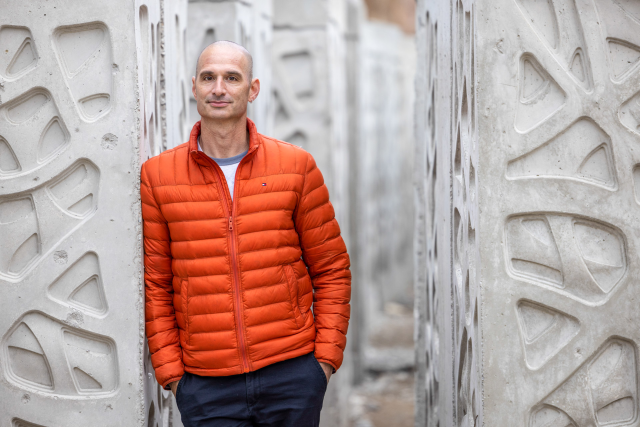Israeli marine biologists Ido Sella and Shimrit Perkol-Finkel have been nominated finalists in the European Inventor Award 2022 for their efforts to promote marine biodiversity via the use of concrete technology.
Sella and Perkol-Finkel’s new type of marine concrete promotes the growth of local sea life, thereby strengthening the concrete’s structure. Their product, ECOncrete, reduces infrastructure’s environmental impact, including sea barriers, ports, and marinas.
The two marine biologists are well-known for developing marine construction materials that enable more eco-friendly coastal infrastructure in the environmental sector. Their product is being utilized in ten nations throughout the globe.
Will you offer us a hand? Every gift, regardless of size, fuels our future.
Your critical contribution enables us to maintain our independence from shareholders or wealthy owners, allowing us to keep up reporting without bias. It means we can continue to make Jewish Business News available to everyone.
You can support us for as little as $1 via PayPal at office@jewishbusinessnews.com.
Thank you.
“Through research and creativity, Sella and Perkol-Finkel have converted a common building material into a habitat for marine life,” said EPO President António Campinos in announcing the 2022 finalists for the European Inventor Award. As maritime building is a booming business, this innovation has the potential to have a significant impact and reduce the industry’s worldwide environmental imprint.
Sella and Perkol-Finkel, who passed away in 2021, are designated one of the three contenders for the European Inventor Award in the “Non-EPO nations” category, which recognizes inventions made outside of EPO member countries. On June 21, 2022, the EPO’s annual innovation prize winners will be announced during a virtual event for the European Inventor Award.
Providing a precise response
Concrete, commonly used in maritime infrastructure, can upset the chemical equilibrium in marine habitats and produce flat terrains, creating an unfavorable environment for shellfish and corals living in the tiny crevices on the sea bottom. In contrast, invasive marine organisms that pose a hazard to native ecosystems tend to thrive in areas surrounded by concrete.
In response to these obstacles, Sella and Perkol Finkel’s solution includes concrete additives that prevent dangerous chemicals from seeping into saltwater while boosting the material’s compression strength by up to 10 percent. The molds from which concrete blocks are cast have ridges and crevices that provide marine life with the essential complexity for refuge. These ridges and holes attract clam larvae, which require microscopic openings to thrive in an environment. The product’s liners, coatings, and mold-modifying chemicals also reproduce the micro-level surfaces necessary for marine larvae to settle. Due to the fact that their skeletons encase the surface and function as biological glue, these organisms can further reinforce the concrete.
“Consider barnacles, oysters, and corals, which construct their skeleton by extracting calcium ions from the water and combining them with dissolved carbon dioxide to form calcium carbonate,” explained Sella. “When these sessile creatures settle on concrete and encase it with calcium carbonate, they strengthen it. In terms of tensile strength, oyster-coated concrete is ten times stronger than bare concrete.”
The product, which is already utilized in ten nations worldwide, assists the concrete sector in reducing emissions and enhancing marine habitats near ports, sea barriers, and marinas.




